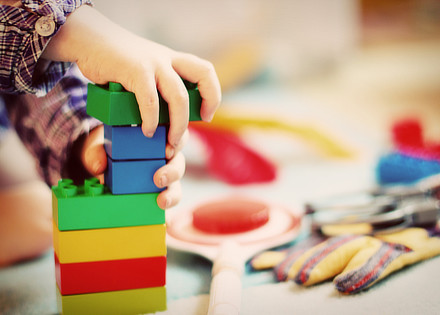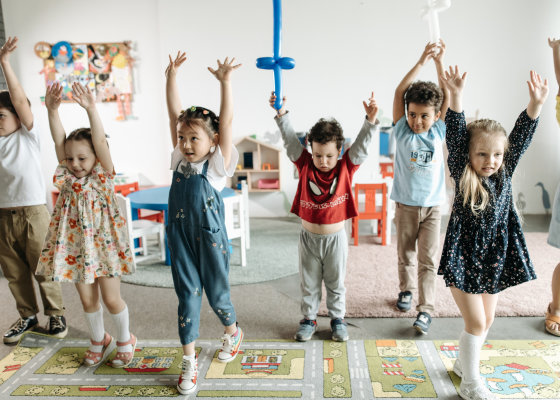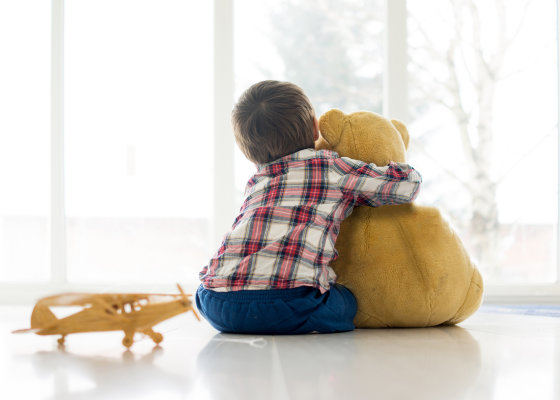Restricted and repetitive behaviours (RRBs) are considered a common characteristic of Autism Spectrum Disorder (ASD). RRBs can sometimes look like; focusing on specific interests, following rigid routines, repeating certain movements, and being fixated on specific parts of objects.
RRBs are different for every person and can vary, from behaviours that affect a person’s ability to function in some situations (Level 1) or that affect their ability to function in all situations (Level 3). RRBs can significantly impact the daily lives of people with ASD, their family and support systems. Sometimes they impact on the person’s ability to function in their environments (e.g., home, school, daycare) or in their learning development, particularly when these RRBs are more intense or potentially dangerous. Although it should be noted that many RRBs that are less severe may not impact their lives negatively at all, in fact many people with ASD would say that engaging in RRB’s provide some benefit to their lives.

In this article, we will look at some examples of RRBs, how they may impact children with ASD, as well as how we can respond to these behaviours.
Are Restricted and Repetitive Behaviours Only Associated With Autism?
No, these behaviours can also be associated with other conditions like; Obsessive Compulsive Disorder (OCD), Tourette Syndrome (TS), learning disabilities, language impairments and Global Developmental Delay (GDD). Children with ASD often display a wider range of RRBs than their same aged, neurotypical or developmentally delayed peers. Sometimes these can be seen in play (e.g., with specific object parts), through daily routines (e.g., rigidities around routines) or through body movements (e.g., repetitive body movements).
There are similarities and differences in the way RRBs are shown in OCD and ASD, so careful assessment is necessary for correct diagnosis.
What Are Some Examples Of Restricted And Repetitive Behaviours?
RRBs are unique to each individual. An individual may engage in few RRBs or a combination of many. Some examples of RRBs include:
Special interests (e.g., exploring a topic extensively), compulsions (e.g., needing to engage in an action or number of actions before completing a specific task), resistance to change (e.g., unable to tolerate or cope when changes occur to routines), repetitive movements (e.g., hand flapping or rocking body back and forth), self-injurious behaviour (e.g., a physical repetitive behaviour that may result in self injury, such as sucking on hand, scratching self or PICA), echolalia (e.g., repeated vocalisations of sounds, words or sentences), insistence on sameness (e.g., wearing the same piece of clothing every day) and sensory interests (e.g., looking at objects from certain angles).

What Are The Four Subcategories Of RRBs?
Research has suggested four subcategories to help break down the broad scope of RRBs associated with an ASD diagnosis [1], discussed below.
1. Encompassing preoccupations or circumscribed patterns of interest
This category accounts for ‘unusual preoccupations’ and ‘attachment to objects’. Meaning the individual may have a heightened interest in or a focus on specific topics, objects, or activities, that can dictate a person’s behaviours and consume their thoughts.
2. Apparently compulsive adherence to specific non-functional routines or rituals
This subcategory explains RRBs where the individual engages in potentially irrational or non-functional routines or rituals at a high frequency. Deviations from these specific routines or rituals may lead to the person feeling anxious or distressed.
These behaviours may present in children with ASD in the following ways:
● lining up objects in a specific order
● insisting on following a particular route to school (or work for adults)
● repeating certain words or phrases in a specific manner.
3. Stereotyped and repetitive motor mannerisms
These RRBs involve repetitive movement of different body parts (e.g., hand flapping, body rocking, or spinning). These behaviours may be self-stimulatory or self-soothing and can sometimes be triggered by various sensory experiences (e.g., sounds, lights, or textures).
4. Preoccupations with part-objects or non-functional elements of materials
These RRBs involve the individual displaying an intense interest or fascination with certain parts or details of objects or materials.
Some ways children may show these RRBs include:
● repeatedly spinning the wheels of a toy car
● focusing on the texture or colour of a specific object
● lining up objects based on their shape or size.
How Can RRBs Impact Children’s Development?
Research by Honey, Rodgers and McConachie (2012) into the impact RRBs can have on children’s development, found that excessive RRBs can lead to problems with skill development, reduce chances of positive social interaction, and create stigma [1].
Some research has shown that RRBs reduce a child’s interaction with their environment, which can decrease their access to natural learning opportunities early on in life [2]. Children who restrict their engagement with their environment to particular objects or areas of interest may also limit their exploration of other play and topics, compared with their peers.
Research by Pierce and Courchesne found that children with ASD tend to explore less than their typically developing peers, however this was not linked to engagement with RRBs [2]. Their research also suggested that making a child’s environment more interesting (e.g., introducing new materials for them to explore) can lead to a wider variety of play and therefore increased engagement with the environment, as opposed to focusing on reducing RRBs alone [2].
When RRBs are more intense or potentially dangerous, they can have a big impact on family functioning and well-being. This can lead to higher stress levels within the household and can sometimes result in parents relying on negative strategies to cope. Research has shown that negative parenting styles can impact their child’s developmental outcomes significantly, on top of the RRBs decreasing the child’s engagement with their environment. Early intervention and support to target the reduction of unsafe and disruptive RRBs can also reduce the negative impacts the child and their family may experience from the RRBs. [3]

What Causes Repetitive Behaviour In Autism?
The cause of RRBs is currently unknown, some studies have suggested that anxiety symptoms are linked to repetitive behaviours and may be brought on during periods of stress. RRBs can be a way to self-soothe and calm the symptoms of stress and anxiety.
We know that around 40% of children with ASD also have an anxiety disorder and children without an additional anxiety diagnosis may also display anxiety symptoms. As mentioned before, RBB also appears in obsessive-compulsive disorder, where repetitive behaviours are used to reduce anxiety caused by obsessions. [4]
Can We Reduce Repetitive Behaviour In Autism?
If the child’s repetitive behaviour is restricting their quality of life, impacting their safety or hindering their learning, then reduction of these behaviours may be carefully considered.
Firstly, it is important to try to understand what the child may be gaining from engaging in this behaviour, (e.g., rocking in the classroom may reduce their anxiety). If we then identify aspects of the environment (e.g., lighting, noise, minimal routine, or a cluttered space) that could be inducing this anxiety and therefore increasing the need to engage in the behaviour, we can look to change the environment, which could decrease the child’s anxious feelings.
If the behaviour is functioning to reduce or/and soothe anxious feelings, we can also teach the child how to use positive strategies to manage these feelings and situations. Such strategies could include mindfulness, deep breathing, or teaching functional ways to express how they are feeling. [5]
Other strategies for reducing RRBs that may not be functioning as a result of anxiety could include increasing the child’s functional communication (e.g., so they are able to remove themselves from stressful environments or situations if needed or wanted), use of visual schedules to help with coping with new or changes in routines, or general skill building (e.g., teaching the child new ways to play and interact with others so that their skills and interests are less restricted). [6]
In the past, RRBs were commonly targeted with interruption, redirection, prompting and differential reinforcement. Whilst this may still be an approach used today, this is not a common approach used at Mosaic Early Intervention.
What is the approach used at Mosaic Early Intervention?
Regardless of the type and intensity of RRB, all RRBs are targeted using an approach in line with Today’s ABA . One goal to this is ensuring the child is Happy, Relaxed and Engaged (HRE) throughout therapy sessions and particularly before implementing any interventions, placing any instructions or focusing on teaching new skills. We also honour each child as an individual and understand that in order for them to achieve a HRE state, they may engage in RRB’s. Our goal is not to remove something from a person’s life that bring them joy, but instead create a learning environment where they feel safe, in control, and are HRE.
Furthermore, RRB’s are only targeted for reduction at Mosaic Early Intervention should they cause harm to the individual or the people in their environment, or if they are presenting as a significant barrier to the child learning from and engaging positively with their environment. The overall aim is to improve the child’s overall quality of life, whilst at all times ensuring they are HRE.
Do Restricted And Repetitive Behaviours Change With Age?
In typically developing children RRBs decrease over time, however, in children who have ASD they tend to remain consistent and may increase intensity as they reach their early school years.
As a baby grows into a toddler, we often observe them engaging in repetitive movements such as flapping their hands, babbling similar sounds, and rocking their body. This can make the early diagnosis of ASD challenging because this exploration of repetitive movement is part of the typical developmental process.
Research in typical early childhood development, found that RRBs were more prevalent in toddlers than in preschoolers. For children with ASD, RRBs either remained relatively high or increased over time from the age of 2 to 9. [7]

Summary
Restricted and repetitive behaviours (RRBs) can vary greatly between individuals and can range in severity. Research has suggested that there may be a connection between RRBs in children with autism spectrum disorder (ASD) and their ability to learn and positively engage with their environment and the people in their lives. Additionally, RRBs may increase during times of anxiety and stress as they can help individuals with ASD to self soothe or calm. Children can be supported through early intervention programs that help reduce harmful or dangerous RRBs and provide guidance to their families, teachers and support network.
Acknowledgements go to Zoe Fuller, CBA, for her valuable contributions as a co-editor of this post.
Sources:
- Measurement of restricted and repetitive behaviour in children with autism spectrum disorder: Selecting a questionnaire or interview
- What interests young autistic children? An exploratory study of object exploration and repetitive behavior
- Evidence-Based Behavioral Interventions for Repetitive Behaviors in Autism
- The relationship between subtypes of repetitive behaviors and anxiety in children with autism spectrum disorder
- Obsessions and repetitive behaviour – a guide for all audiences
- Understanding and Addressing Restricted and Repetitive Behaviors in Children with Autism
- Restricted and Repetitive Behaviors in Toddlers and Preschoolers with Autism Spectrum Disorders Based on the Autism Diagnostic Observation Schedule (ADOS)
